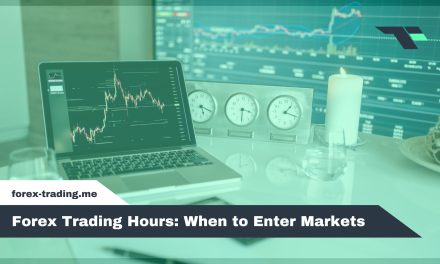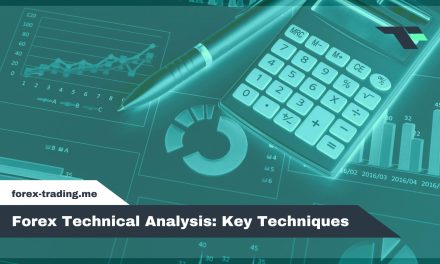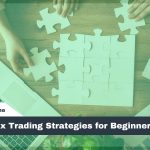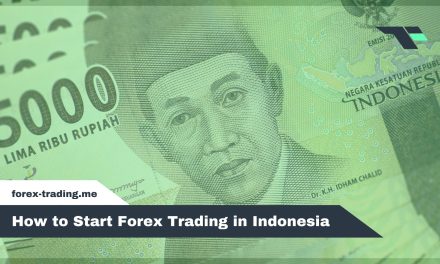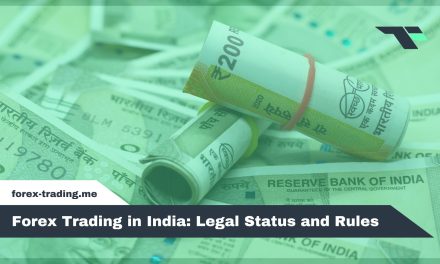
Leverage in Forex Trading: Risks and Benefits

Leverage in forex trading allows traders to control large positions with minimal capital, typically requiring only 1-10% margin collateral. Benefits include substantial return potential from small price movements and enhanced capital efficiency for portfolio diversification. However, leverage amplifies both profits and losses equally, potentially eroding trading capital quickly during adverse market movements. Regulatory limits vary globally, with major currency pairs capped at 30:1 in the EU and 50:1 in the US. Understanding proper risk management strategies becomes essential for sustainable trading success.
Table of Contents
What is leverage in forex trading?
Leverage in forex trading allows traders to control positions worth considerably more than their initial capital investment, with brokers typically offering ratios ranging from 30:1 in regulated EU markets to 500:1 with offshore providers. This mechanism operates through margin requirements, where traders must deposit a small percentage of the total position size as collateral, such as the 1% margin required for 100:1 leverage. Understanding these margin calculations and implementing proper exposure management becomes essential, as leverage amplifies both potential profits and losses proportionally to the chosen ratio.
Understanding margin requirements
When traders utilize borrowed capital to amplify their market exposure, they must deposit a specific amount of money, known as margin, to secure their positions. This margin serves as collateral for the borrowed funds and determines position size capacity.
| Margin Type | Percentage Required | Purpose |
|---|---|---|
| Initial Margin | 1-10% of position value | Opens new positions |
| Maintenance Margin | Typically 50% of initial | Keeps positions active |
| Free Margin | Variable amount | Available for new trades |
| Margin Level | Equity/Margin × 100 | Monitors account health |
| Margin Call Threshold | Usually 50% margin level | Triggers position closure |
Brokers calculate required margin based on leverage ratios and position sizes. If account equity falls below the maintenance margin, typically fifty percent, brokers may issue margin calls, potentially closing positions to protect against further losses.
Exposure management basics
Understanding margin requirements naturally leads to examining how borrowed funds amplify market exposure, which forms the foundation of effective position sizing. Leverage multiplies both potential profits and losses by allowing traders to control positions far exceeding their account balance. This amplification effect means that small market movements can notably impact trading accounts.
Risk exposure scales directly with leverage ratios and position sizes. At 100:1 leverage, a $1,000 account can open a $100,000 position, exposing the trader to full market swings on the entire notional value. This relationship between account balance and position size determines risk per trade.
Key exposure management considerations include:
- Position sizing relative to account balance – Limiting exposure to sustainable levels
- Calculating notional value impact – Understanding full position exposure beyond margin
- Risk per trade assessment – Evaluating potential losses against available capital
How leverage works in forex trading
Understanding leverage mechanics requires grasping the relationship between margin requirements and position sizes, where traders deposit a fraction of their total trade value to control substantially larger market positions. Calculating margin ratios involves dividing the position size by the required margin deposit, which determines the leverage ratio applied to each trade. Examining specific margin trade examples demonstrates how these mathematical relationships translate into real trading scenarios, revealing both the amplified profit potential and increased risk exposure that leverage creates.
Calculating margin ratios
Since margin calculations form the mathematical foundation of leverage decisions, traders must master the basic formula to determine how much capital their broker will require for any given position. The required margin calculation follows a straightforward formula that incorporates trade size, leverage ratio, and current currency price.
The essential components of margin calculations include:
- Required Margin Formula: (Trade Size ÷ Leverage) × Currency Price determines exact margin requirements
- Practical Application: A $50,000 lot with 50:1 leverage at 1.2000 exchange rate requires $1,000 margin
- Account Monitoring: Free margin equals account equity minus required margin, indicating available trading capital
Understanding these calculations enables traders to assess position sizing accurately, manage account equity effectively, and maintain sufficient free margin for additional trades while avoiding margin calls.
Example margin trades
Moving from margin calculations to practical implementation, traders benefit from examining specific trade scenarios that demonstrate how leverage amplifies both potential profits and losses in real market conditions. Consider a long position example where a trader uses 50:1 leverage to control a standard lot of EUR/USD with $2,000 margin. If the currency pair moves favorably by 100 pips, the profit equals $1,000, representing a 50% return on the margin requirement. Conversely, in a short position example with identical parameters, an adverse 100-pip movement generates a $1,000 loss, also representing 50% of the margin. These profit and loss calculations illustrate how leverage magnifies market movements proportionally, making risk management essential for successful forex trading outcomes.
Below is a concise summary table that distills the core concepts of forex leverage mechanics, margin ratio calculations, and real-world trade examples. It highlights definitions, formulas, practical illustrations, and the key implications each component has for effective risk and position management.
| Component | Description | Formula / Example | Key Impact |
|---|---|---|---|
| Leverage Mechanics | Using a fraction of trade value to control a larger position | N/A | Enables outsized market exposure with limited capital |
| Margin Ratio Calculation | Determines how much capital a broker requires for a given position | Required Margin = (Trade Size ÷ Leverage) × PriceExample: (50 000 ÷ 50)×1.2000 = 1 000 USD | Ensures accurate position sizing and margin planning |
| Free Margin | The portion of account equity available for new trades | Free Margin = Equity − Required Margin | Helps maintain buffer to avoid margin calls |
| Amplified Profit Potential | How leverage magnifies gains when market moves favorably | 50:1 leverage, 100-pip move on EUR/USD = 1 000 USD profit (50% ROI) | Demonstrates upside power of leverage |
| Increased Risk Exposure | How leverage equally magnifies losses when market moves against the trader | 100-pip adverse move = 1 000 USD loss (50% of margin) | Underscores the importance of strict risk controls |
Benefits of leverage in forex trading
Leverage in forex trading offers traders two primary advantages that make it an attractive tool despite its inherent risks. The mechanism allows traders to notably boost their return on investment by controlling larger market positions with minimal upfront capital, potentially turning small price movements into substantial percentage gains on their invested funds. Additionally, leverage improves capital efficiency by enabling traders to diversify across multiple currency pairs or maintain cash reserves for other opportunities while still accessing meaningful market exposure.
Boosting return on investment
When traders utilize leverage in forex markets, they can achieve substantially higher returns on their initial investment compared to trading with cash alone. This amplification effect transforms modest currency movements into significant profit opportunities, fundamentally altering the risk-reward equation.
Consider how leverage multiplies returns through practical application:
- Return amplification: A 0.5% move in EUR/USD generates $500 profit on a $100,000 leveraged position, creating 50% ROI on just $1,000 margin
- Capital efficiency: Traders can diversify across multiple currency pairs simultaneously without requiring substantial account balances
- Profit acceleration: Small market movements that would yield minimal returns in cash trading become meaningful income sources
This mathematical advantage explains leverage’s popularity among forex participants. However, the same mechanism that amplifies gains equally magnifies losses, requiring careful consideration of position sizing and risk management protocols.
Improving capital efficiency
Beyond simply amplifying returns, leverage fundamentally transforms how traders allocate their available capital across the forex market. This capital efficiency represents one of leverage’s most significant practical advantages, allowing traders to maintain diverse trading positions without requiring proportionally large cash deposits.
When traders utilize leverage ratios such as 20:1, they need only commit 5% of the total position value as margin, effectively freeing 95% of their capital for additional trading opportunities. This efficient margin utilization enables sophisticated portfolio diversification strategies that would otherwise require substantially larger account balances.
The improved cash efficiency allows traders to spread risk across multiple currency pairs simultaneously, potentially reducing overall portfolio volatility while maintaining exposure to various market opportunities. This multi-position trading capability transforms leverage from merely a return amplifier into a thorough capital management tool.
Below is a concise overview of the key benefits that leverage brings to forex traders, highlighting how it amplifies returns and optimizes capital allocation for diversified exposure.
| Benefit | Description | Example / Data | Takeaway |
|---|---|---|---|
| Return Amplification | Turns small currency moves into significant gains by controlling large positions with minimal margin | 0.5% EUR/USD move yields $500 profit on $1,000 margin (50% ROI) | Small price shifts can drive outsized returns |
| Profit Acceleration | Speeds up earning potential compared to cash-only trading | $500 profit vs. $5 in an unleveraged $1,000 position | Leverage multiplies income opportunities |
| Capital Efficiency | Frees up most of your funds for other trades or reserves by requiring only a fraction of position value as margin | 20:1 leverage means 5% margin commitment, 95% free capital | Allows multi-pair diversification |
| Portfolio Diversification | Enables simultaneous positions across various currency pairs without large account balances | Holding 5 pairs at $100,000 each needs only $25,000 margin | Spreads risk and smooths overall volatility |
Risks of leverage in forex trading
While leverage amplifies potential profits, it simultaneously magnifies losses and exposes traders to significant financial risks that can quickly erode trading capital. Margin calls occur when account equity falls below required levels, forcing traders to either deposit additional funds or face automatic position closures at unfavorable prices. Protecting against substantial drawdowns requires implementing strict risk management protocols, as excessive leverage can transform minor market fluctuations into account-threatening losses.
Managing margin calls
As leverage amplifies both profits and losses, traders must develop robust strategies to avoid the dreaded margin call—a broker’s demand for additional funds when account equity falls below minimum requirements. Understanding broker policies becomes essential, as most brokers automatically liquidate positions when equity drops to 20-30% of required margin levels.
Effective margin call management requires proactive monitoring and disciplined risk control:
- Set equity alerts at 50% margin levels to provide early warning before reaching liquidation thresholds
- Scale position sizes proportionally to account balance, avoiding overleveraging that quickly erodes available margin
- Monitor daily drawdowns actively, using stop-losses to prevent small losses from becoming account-threatening margin calls
Successful traders treat margin requirements as critical safety mechanisms rather than obstacles, implementing systematic approaches to maintain adequate equity buffers throughout their trading activities.
Protecting against drawdown
How can traders shield their accounts from devastating drawdowns when leverage magnifies every market movement against their positions? Effective drawdown control requires implementing multiple protective strategies that work together to preserve capital. Position sizing represents the foundation, with experienced traders typically limiting risk per trade to 1-2% of their total account balance, ensuring that even consecutive losses remain manageable. Diversification across different currency pairs reduces exposure to single-market volatility, while trailing stops help lock in profits as favorable trades develop. Risk-per-trade limits prevent emotional decision-making during market stress, keeping large losses rare even when leverage amplifies price movements. Some traders employ hedging strategies to offset potential losses, though this approach requires careful consideration of costs and complexity in execution.
Leverage can be a double-edged sword: while it boosts profit potential, it also magnifies losses and triggers forced liquidations if equity falls too far. Traders must proactively manage margin calls and control drawdowns through alerts, discipline in position sizing, and protective orders to preserve capital under adverse market moves.
| Risk Aspect | Description | Mitigation / Example | Key Insight |
|---|---|---|---|
| Margin Calls | Broker liquidates positions when equity drops below maintenance thresholds (often 20–30% margin) | Set alerts at 50% margin level; scale positions to avoid overleveraging | Early warnings and proportional sizing prevent crises |
| Equity Erosion | Rapid losses on small adverse moves reduce free margin and increase liquidation risk | Use stop-losses and monitor daily drawdowns to cap small losses | Containing each loss keeps the account viable |
| Drawdown Amplification | Consecutive losses can compound quickly under high leverage, risking large portions of capital | Limit risk per trade to 1–2% of balance; diversify across uncorrelated pairs | Small, controlled exposures resist major setbacks |
| Emotional Overreach | High volatility and margin pressure can trigger impulsive trades or panic exits | Follow a strict trading plan and employ trailing stops for discipline | Structure and automation curb emotion-driven errors |
| Complex Hedging Costs | Using hedges to offset risk adds execution complexity and potential additional costs | Evaluate cost-benefit before hedging; use simple offset strategies sparingly | Over-hedging can erode profits faster than markets |
Regulatory limits on leverage in forex trading
Regulatory authorities worldwide have implemented varying leverage caps to protect retail traders from excessive risk exposure, with the European Securities and Markets Authority (ESMA) limiting major currency pairs to 30:1 leverage while the U.S. Commodity Futures Trading Commission (CFTC) allows up to 50:1 leverage on major pairs. These jurisdictional differences create distinct trading environments that directly influence the strategies available to forex traders, as lower leverage caps require larger initial capital deposits to achieve equivalent position sizes. Traders must consequently adapt their risk management approaches and position sizing calculations according to the regulatory framework governing their chosen broker’s jurisdiction.
Margin caps by jurisdiction
Different jurisdictions impose varying restrictions on leverage availability, creating a complex patchwork of regulations that greatly impact where and how traders can access higher-risk trading opportunities. These regulatory frameworks reflect each region’s approach to balancing market access with consumer protection, resulting in significant disparities in allowable leverage ratios.
Key regulatory environments demonstrate this variation:
- Japan: Maintains strict leverage caps at 25:1 for retail traders since 2010, prioritizing stability over high-risk speculation
- European Union: Implements ESMA regulations limiting major currency pairs to 30:1 leverage for retail clients
- Offshore jurisdictions: Some unregulated brokers offer leverage ratios reaching 500:1 or higher, though with increased risk exposure
Understanding these jurisdictional differences helps traders evaluate broker options while considering the regulatory protections and limitations that apply to their trading activities.
Impact on trading strategies
Varying leverage restrictions across jurisdictions fundamentally reshape how traders develop and execute their market strategies, forcing adaptations that can dramatically alter risk management approaches and profit potential. Lower leverage environments, such as those mandated by US regulations limiting ratios to 50:1, naturally favor swing trading and position trading over high-frequency scalping strategies. Traders operating under strict margin constraints must adjust their approach, often requiring larger account balances to maintain meaningful position sizes. Conversely, jurisdictions offering higher leverage ratios enable more aggressive short-term strategies but demand heightened risk awareness. These regulatory differences create distinct trading cultures, with European traders adapting to 30:1 limits while offshore brokers may offer considerably higher ratios, requiring strategic recalibration based on available leverage parameters.
Regulatory bodies worldwide set leverage ceilings to balance market access with retail investor protection. These varying caps—from Japan’s conservative limits to offshore brokers’ high ratios—force traders to adapt position sizing, risk controls, and preferred timeframes to the leverage environment they operate in.
| Jurisdiction/Aspect | Leverage Cap | Rationale | Trading Implication |
|---|---|---|---|
| Japan | 25:1 | Prioritizes market stability | Favors longer-term positions over scalping |
| European Union (ESMA) | 30:1 | Protect retail clients | Supports moderate leverage for balanced strategies |
| United States (CFTC) | 50:1 | Consumer protection | Encourages swing and position trading |
| Offshore Brokers | Up to 500:1+ | Minimal oversight | Enables aggressive, short-term tactics but raises risk |
| Strategy Adaptation | N/A | Adapts to local caps | Aligns trading style—scalping vs. swing—with allowed leverage |
Choosing leverage in forex trading wisely
Selecting appropriate leverage requires traders to establish clear risk management parameters, particularly through setting stop losses that limit potential losses to predetermined amounts and take profit levels that secure gains at target points. This strategic approach must align with individual risk tolerance levels, as surveys indicate traders using leverage ratios of 30:1 or lower consistently outperform those employing 100:1 or higher ratios by approximately 15% over annual periods. The calibration of leverage settings should reflect personal financial circumstances, trading experience, and psychological comfort with potential losses rather than simply maximizing position size.
Setting stop loss and take profit
Prudent traders recognize that leveraged forex positions demand rigorous risk management through strategic placement of stop-loss and take-profit orders, which serve as automated safeguards against both catastrophic losses and missed profit opportunities. These protective orders function as predetermined exit points, enforcing discipline when emotions might otherwise cloud judgment during volatile market conditions.
Effective order placement requires careful consideration of several key factors:
- Risk-reward ratio calculation – A 1:2 ratio allows profitability even with a 40% win rate, making mathematical sense over time
- Market volatility assessment – Stop-loss levels must account for normal price fluctuations to avoid premature exits
- Position sizing alignment – Orders should correspond proportionally to the leveraged position’s actual exposure
Automated exits remove emotional decision-making from trading, ensuring that predetermined risk thresholds remain intact regardless of market psychology or temporary sentiment shifts.
Aligning with risk tolerance
While stop-loss and take-profit orders provide mechanical protection against excessive losses, the foundation of successful leveraged trading lies in honestly evaluating one’s psychological capacity to handle financial stress and market volatility. Traders must align their leverage choices with their emotional risk tolerance, establishing a comfort zone that prevents impulsive decisions during market turbulence. Behavioral studies reveal that 60% of traders exceed their planned leverage during high-volatility periods, considerably increasing loss frequency. This pattern demonstrates how stress can override rational decision-making, leading to over-leveraging beyond one’s psychological threshold. Successful traders recognize their stress limits and select leverage ratios that allow them to maintain disciplined trading behavior, even when positions move against them, ensuring that emotional reactions don’t compromise their trading strategy.
Choosing the right leverage isn’t about maximizing position size—it’s about matching your risk parameters and psychology with disciplined safeguards. By calibrating stop-loss/take-profit levels and honestly assessing your comfort with potential losses, you create a resilience framework that sustains profitable trading over time.
| Component | Description | Practical Tip / Data | Key Benefit |
|---|---|---|---|
| Stop-Loss & Take-Profit Placement | Automated exit orders that enforce risk-reward thresholds and lock in gains | Use a 1:2 risk-reward ratio and position stops beyond normal volatility | Removes emotion, ensures disciplined exits |
| Risk-Reward Ratio Calculation | Mathematical framework showing how even a 40% win rate can be profitable | A 1:2 ratio yields net gains with just 40% winning trades | Validates long-term strategy viability |
| Market Volatility Assessment | Adjust stop levels to current price swings to avoid premature liquidation | Check average daily range; set stops ~1.5× ADR | Reduces false stops, improves trade longevity |
| Position Sizing Alignment | Ensures your protective orders correspond to actual leveraged exposure | Risk no more than 1–2% of equity per trade | Caps loss per position, preserves capital |
| Emotional Risk Tolerance Alignment | Matching leverage to psychological comfort to prevent impulsive over-leveraging | Survey: traders at ≤30:1 leverage outperform those at ≥100:1 by 15% yearly | Maintains consistency under market stress |
Preventing burnout in leveraged forex trading
The high-stakes nature of leveraged forex trading creates a breeding ground for psychological strain, where traders face constant pressure to make profitable decisions while managing amplified risks. Research indicates that 75% of retail traders identify stress and fatigue as primary factors behind poor trading choices, highlighting the critical need for burnout prevention strategies. Recognizing early warning signs of trader fatigue and implementing effective stress management techniques can mean the difference between sustainable success and devastating losses in leveraged positions.
Identifying trader fatigue
Recognizing early warning signs of trader fatigue becomes critical when operating with leverage, as exhaustion can lead to costly mistakes that amplify losses in leveraged positions. Traders must monitor their performance metrics regularly to identify declining effectiveness before significant damage occurs.
Key warning signs include:
- Increasing error rates – A 20% rise in unprofitable trades over one week often correlates with rising fatigue levels
- Discipline deterioration – Deviating from established trading strategies or ignoring risk management rules
- Physical and mental exhaustion – Difficulty concentrating, making impulsive decisions, or feeling overwhelmed by market movements
Performance tracking reveals patterns that indicate when traders should step back from active trading or reduce position sizes. Maintaining detailed records of trading decisions, win-loss ratios, and emotional states helps identify fatigue before it compromises judgment in high-leverage situations.
Stress management techniques
Once traders identify the warning signs of fatigue, implementing structured stress management techniques becomes necessary to prevent complete burnout and maintain consistent performance in leveraged trading environments. Daily journaling proves particularly effective, with research showing traders who maintain trading journals reduce emotional trading by 30% and improve consistency by 25%. Scheduled breaks during trading sessions help prevent mental exhaustion, while mindfulness practices enable traders to maintain emotional equilibrium during volatile market conditions.
Establishing clear work-life balance boundaries prevents forex trading from consuming personal time and relationships. Regular stress reduction activities, such as physical exercise or meditation, help traders process the psychological pressure inherent in leveraged positions. These structured approaches create sustainable trading habits that protect both capital and mental health over extended periods.
Burnout in high-leverage environments can erode discipline and amplify losses. By tracking performance metrics, recognizing fatigue signals early, and adopting structured stress-management routines, traders safeguard both capital and mental well-being.
| Component | Description | Practical Tip / Data | Key Benefit |
|---|---|---|---|
| Fatigue Warning Signs | Indicators such as rising error rates and strategy deviations | A 20% weekly increase in losing trades signals growing exhaustion | Triggers timely breaks before costly mistakes |
| Performance Tracking | Regular review of trade records, win-loss ratios, and emotional logs | Keep a trading journal to log decisions and mood daily | Provides data to identify fatigue trends early |
| Scheduled Breaks | Brief pauses during trading sessions to reset focus | Take 10-minute breaks every hour | Reduces mental overload and decision fatigue |
| Mindfulness Practices | Techniques like meditation or deep-breathing to maintain emotional balance | Spend 5 minutes on breathing exercises before key market sessions | Enhances clarity under pressure |
| Work–Life Boundaries | Clear separation of trading hours from personal time | Define strict start/end times and avoid trading outside them | Preserves relationships and overall well-being |
| Physical Activity | Regular exercise to counteract sedentary trading routines | Aim for 30 minutes of cardio or stretching post-session | Boosts energy, reduces stress hormone levels |
| Journal-Based Reflection | Post-trade analysis focusing on emotional triggers and decision quality | Review journal weekly to adjust routines and safeguards | Promotes continuous improvement and resilience |
Conclusion
Leverage in forex trading presents traders with a double-edged instrument that can amplify returns while simultaneously increasing risk exposure. Success requires thorough understanding of position sizing, market volatility, and personal risk tolerance. Regulatory frameworks continue evolving to protect retail participants, yet responsibility ultimately rests with individual traders. Those who approach leveraged trading with proper education, disciplined risk management, and realistic expectations position themselves for sustainable participation in global currency markets.


